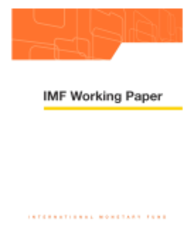
Does the Nominal Exchange Rate Regime Matter?
The effect of the exchange rate regime on inflation and growth is examined. The 30-year data set includes over 100 countries and nine regime types. Pegged regimes are associated with lower inflation than intermediate or flexible regimes. This anti-inflationary benefit reflects lower money supply growth (a discipline effect) and higher money demand growth (a credibility effect). Output growth does not vary significantly across regimes: Countries with pegged regimes invest more and are more open to international trade than those with flexible rates, but they experience lower residual productivity growth. Output and employment are more variable under pegged rates than under flexible rates.
Publication date: November 1995
ISBN: 9781451854329
$15.00
Add to Cart by clicking price of the language and format you'd like to purchase
Available Languages and Formats
| English |
Prices in red indicate formats that are not yet available but are forthcoming.
Topics covered in this book
This title contains information about the following subjects.
Click on a subject if you would like to see other titles with the same subjects.
Inflation , Money and Monetary Policy , exchange rate , exchange rate regime , exchange rate regimes , nominal exchange rate
Summary



